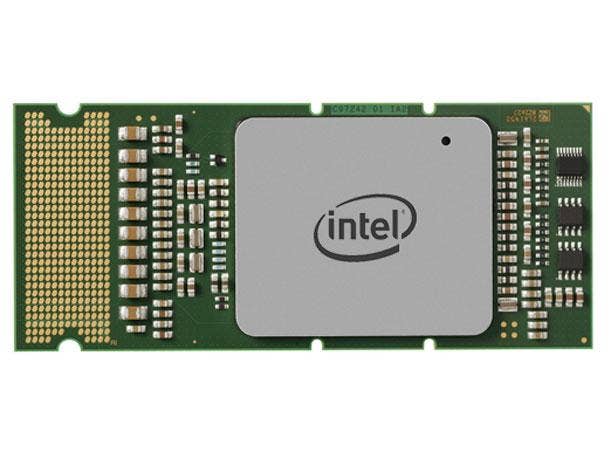Intel CPU Shortage Due To Strain Laptop Shipments, Lower DRAM Prices

The current Intel CPU shortage is expected to create a strain on OEMs' ability to ship laptops for the second half of 2018, but it's also expected to lower DRAM and SSD prices, according to global market intelligence firm TrendForce.
The Taiwanese firm said on Tuesday that it has lowered its forecast for 2018 global notebook shipments by 0.2 percent as a result of the Intel CPU shortage — which CRN reported earlier this week is already having an impact on channel partners. The firm also said the shortage could last well into the first half of next year.
[Related: Intel Hardware Fixes For Spectre, Meltdown & More: What We Know]
Bob Venero, CEO of Future Tech Enterprise, No. 115 on the 2018 CRN Solution Provider 500, told CRN last week that the Intel CPU shortage has pushed the lead time for PC shipments to his enterprise customers from an average of 14 days to as much as 120 days. He said thousands of units are being affected and that it's leading to deferred revenue.
On Tuesday, Venero said 60 percent of his outstanding orders are laptops.
"Companies are doing much more laptops than desktops. That's been the trend for the last few years. You get more productivity from an individual if you give them a notebook," he said.
Venero said that the supply issue has become bad enough that Future Tech has begun making PC orders the company would have originally placed at the end of October.
"We order ahead of time anyway. This is just worse," he said.
TrendForce, which characterized the Intel CPU shortage as "worsening," said OEMs are reporting an insufficient supply of the latest eighth-generation Core mobile CPU, also known as Whiskey Lake, despite Intel's original plan to begin mass production of the chip in the third quarter. The firm said it estimated that the supply gap for notebook CPUs has widened from 5 percent in August to 5 percent to 10 percent this month, with the possibility for it to increase to more than 10 percent in the fourth quarter. The shortage may not end until sometime in the first half of 2019, the firm added, which is later than what previous reports indicated.
In a statement to CRN, Intel said, “We are on schedule to deliver the new 8th Gen Intel Core U-series mobile processors optimized for connectivity with availability of OEM systems this fall. We continue to prioritize production of Xeon and Core processors as we work to meet strong customer demand for Intel products.”
TrendForce said it is hard to pin down the exact reason behind the shortage because the issue is impacting both new and old Intel CPU product lines, including the Coffee Lake CPU that has been on the market for six months and is used in mainstream notebooks.
Intel, Santa Clara, Calif., has acknowledged the CPU supply issues, with interim CEO Bob Swan stating in July that the company's "biggest challenge in the second half [of the year] will be meeting additional demand." The company said in a statement to CRN last week that it’s working with customers on extra demand, which has increased Intel's 2018 full-year revenue outlook by $4.5 billion.
CRN reported on Monday that Intel has pinned the CPU shortage on two other factors beyond higher-than-expected demand, according to a source who was briefed by the company earlier this summer. The two other factors are Intel's delay of its next-generation, 10-nanometer CPUs to 2019 and additional factory and assembly test capacity required for higher-end processors, the source said.
The potential upside of the lowered notebook forecast is that it will cause DRAM prices to drop lower than expected, according to TrendForce. The firm said it also expects SSDs to drop in price for the same reason, though it added that the price drop will likely be steeper in the fourth quarter. The reason for the price drops is because of the lower laptop shipments forecast, which is expected to decrease demand for both DRAM and SSDs.